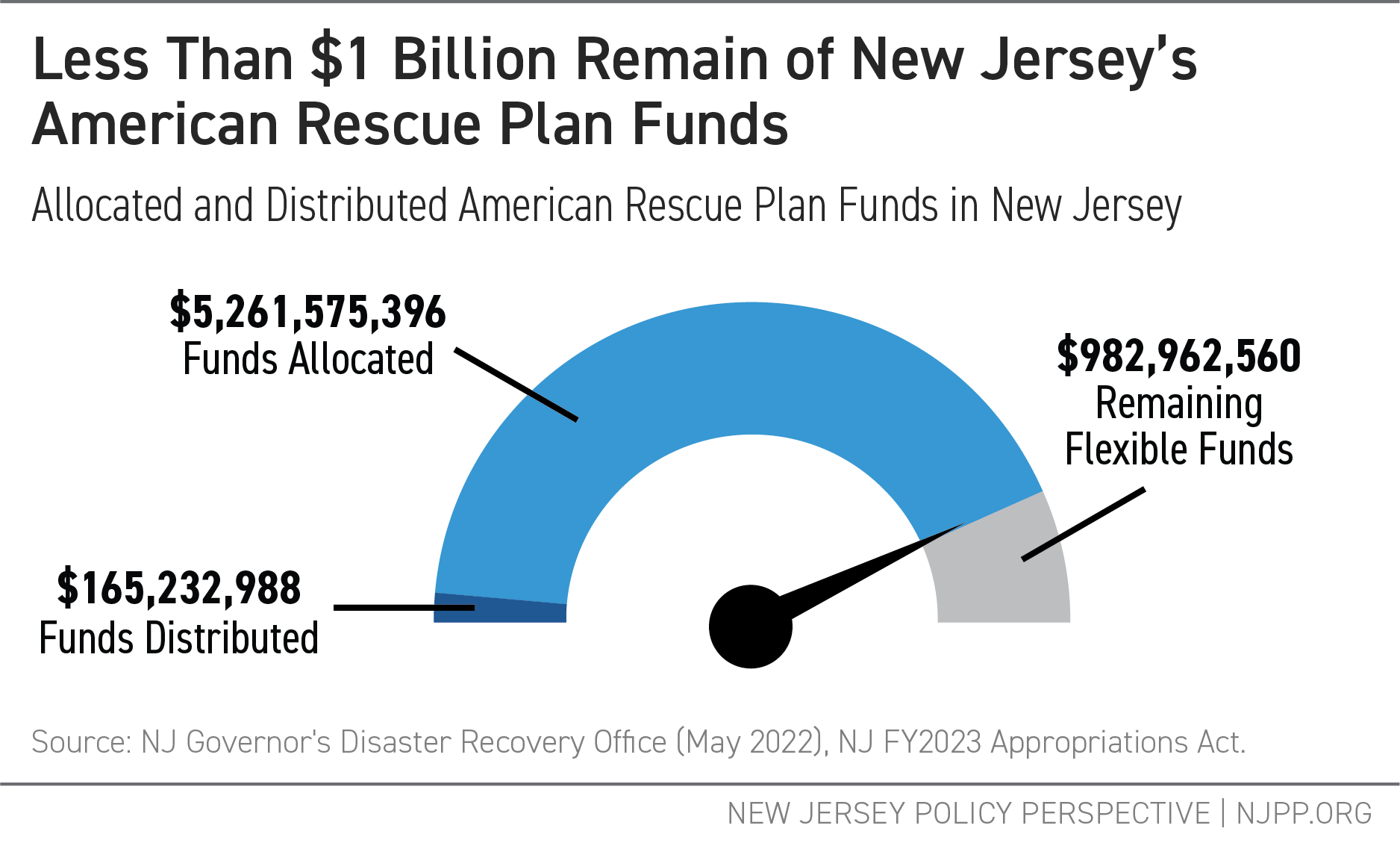With less than $1 billion remaining in federal American Rescue Plan (ARP) funds, New Jersey’s unique opportunity to provide immediate relief to families and communities harmed by the pandemic is quickly slipping away. Roughly 85 percent of the $6.2 billion dollars in ARP funds have already been appropriated by Governor Murphy and state lawmakers, with more than $2.4 billion worth of federal funds included in the latest state budget. It’s hard to say whether this recent spending aligns with the Biden administration’s guidance to direct relief towards those disproportionately harmed by the pandemic, however, given the lack of transparency and publicly available information on these appropriations.

If used as intended by the Biden administration, ARP funds offer a once-in-a-lifetime chance to advance racial equity by investing in communities that were hardest hit by the pandemic and historically left behind in the lawmaking process. But with more than $5 billion appropriated behind closed doors and few details available to the public, lawmakers can and must do a better job of providing direct relief to workers, families, and communities who need the most help — and in a transparent manner that invites public input.
Newest Allocations Aid Institutions But Ignore Direct Assistance
The new state budget that took effect July 1 includes some big investments that align with how ARP funds should be spent: affordable housing development ($305 million), lead paint removal from homes ($170 million), new facilities to advance universal pre-K education ($120 million), and almost $100 million to upgrade state operations for social services.
But, despite repeated calls from policy experts, community leaders, and advocates to prioritize disproportionately harmed residents, elected leaders failed to deliver adequate direct relief to those who need it. The new ARP allocations through the budget did not include direct relief for immigrant workers, hazard pay for essential workers, rental assistance for those struggling to keep a roof over their head, or cash assistance for residents who maxed out their benefits through the Temporary Assistance for Needy Families (TANF) program. These deliberate choices made behind closed doors represent a lost opportunity to meet the moment and meaningfully improve the lives of New Jersey residents who are not paid enough to get by or cannot work at this time.
Transparency Not Treated as a Priority
Based on current, available documentation, each new allocation of ARP funds in the budget lacks any kind of description, meaning there is no way to tell who exactly benefits from hundreds of millions of dollars worth of spending. For example, lawmakers allocated $300 million to water infrastructure, but without basic details it’s unclear which communities will benefit and which will be left behind. Another $300 million was granted to Rutgers University, but only thanks to a reporter’s diligence do we learn that a third of it will pay for a new sports facility. Middlesex County’s community college and improvement authority each received $20 million, but without some context it’s difficult to determine the relevance of these one-time investments.
In other cases, the allocation goes to a new or existing program that will require ongoing funding, drawing into question the state’s commitment toward its success once the federal funds are gone. Case in point: The state’s only public hospital received $50 million for a building assessment plan, but with no guarantee that the plan will be implemented. The state’s new universal newborn home visit program was signed into law with much fanfare, but using these one-time fiscal recovery dollars ($6 million) to fund the first year casts doubt on whether the state will be able to sustainably fund the program in future years. Similar concerns arise around allocations for programs that are normally supported by state funds, like child-care subsidies ($48 million), grants for mental health ($15 million), and capital improvement projects across the state ($50 million).
The lack of information on ARP allocations calls into question whether some of these investments were necessary at all — especially for funds sent to private institutions that should have plenty of resources to cover the costs themselves. For example, $13 million has been granted to two health systems for “hospital infrastructure” and workforce education. The state should require extensive oversight of grants to private institutions at a minimum, including clawback provisions should misuse of this aid come to light.
What’s Next for ARP Funds
The state now has less than $1 billion remaining in state fiscal recovery funds that have yet to be designated — not including the $300 million in discretionary funds which the Governor can disburse in amounts of $20 million or less. The Joint Budget Oversight Committee (JBOC) will meet quarterly to approve proposed allocations above that $20 million threshold. The public has not been granted a meaningful process by which to weigh in on how the remaining dollars are spent and, based on the uneven quality of issuances so far, that must change. Lawmakers can start by allowing public testimony at future JBOC hearings — consistent with most other legislative committee hearings — so that policy experts, essential workers, and community leaders alike can weigh in on ARP spending proposals before they’re approved.

